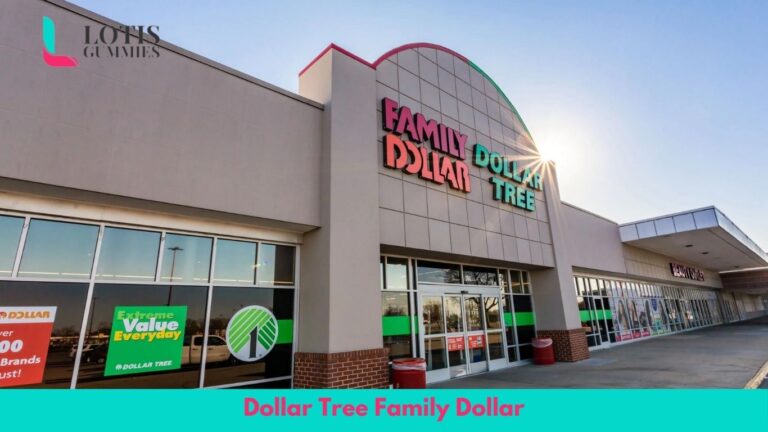On Wednesday, Dollar Tree, led by CEO Rick Dreiling, announced its plans to explore selling or spinning off its Family Dollar chain, a decision coming nearly a decade after Dollar Tree acquired Family Dollar in a challenging $8.5 billion merger. Rick Dreiling, 70, who has an estimated net worth of $50 million, highlighted the unique needs of the two chains as a primary reason for considering this separation.
What Led to the Acquisition of Family Dollar?
Dollar Tree acquired Family Dollar in 2015 for $8.5 billion with high hopes of expanding its customer base, reducing operational costs, and strengthening its competitive position against rivals like Dollar General, which also bid for Family Dollar. The merger aimed to integrate Family Dollar’s lower-income urban market with Dollar Tree’s middle-income suburban market, envisioning a broadened reach and enhanced market presence.
How Has Family Dollar Performed Since the Acquisition?
The integration of Family Dollar has proven problematic. Family Dollar operates around 8,000 stores across the United States, primarily catering to low-income customers in urban areas, with prices ranging from $1 to $10. Despite the initial optimism, Family Dollar has faced numerous challenges, including store closures, competition from larger retailers, and increased operating costs due to inflation. Last year alone, the chain closed over 900 stores, highlighting ongoing operational struggles.
What Challenges Has Family Dollar Faced?
Family Dollar has been criticized for messy stores, high prices, and over-expansion. The chain has struggled with maintaining store conditions, leading to negative customer experiences. Additionally, strong competition from larger retailers like Walmart and Dollar General has further strained Family Dollar’s performance. Inflation has exacerbated these challenges by increasing operating costs and making it difficult for low-income customers to afford even the discounted prices.
Why Is Dollar Tree Considering a Split from Family Dollar?
Rick Dreiling emphasized that the “unique needs” of Dollar Tree and Family Dollar necessitated a reconsideration of their merger. Dollar Tree, targeting middle-income consumers in suburban areas, operates differently from Family Dollar, which focuses on lower-income customers in urban settings. This disparity has led to operational inefficiencies and a diluted brand identity, prompting Dollar Tree to explore a potential separation.
How Have Analysts Reacted to Family Dollar’s Performance?
Analysts have consistently pointed out the challenges Family Dollar poses to Dollar Tree. Neil Saunders, an analyst at GlobalData Retail, described Family Dollar as a “problematic business” that has weighed down Dollar Tree’s overall performance. The sales data supports this view, with Family Dollar’s sales at stores open for at least one year increasing by a mere 0.1% last quarter. This sluggish performance underscores the difficulties in managing the larger, more complex Family Dollar chain.
What Strategies Have Been Attempted to Revitalize Family Dollar?
Since the acquisition, Dollar Tree has implemented several strategies to improve Family Dollar’s performance. Early initiatives included selling beer and renovating stores. However, these efforts were met with limited success. Many Family Dollar stores were in worse condition than anticipated, and their close proximity to one another led to internal competition and cannibalized sales. Despite these challenges, Dollar Tree has continued to invest in store renovations, although many locations still suffer from poor maintenance.
What Legal and Safety Issues Has Family Dollar Faced?
In addition to operational challenges, Family Dollar has encountered significant legal and safety issues. This year, the chain faced a record $41.6 million fine from the Justice Department for violating product safety standards. The fine was imposed due to items being stocked in a rat-infested warehouse in West Memphis, filled with live, dead, and decaying rodents. This incident further tarnished Family Dollar’s reputation and underscored the severity of its operational issues.
What Does the Future Hold for Family Dollar and Dollar Tree?
As Dollar Tree considers selling or spinning off Family Dollar, the future of both chains remains uncertain. A separation could allow Dollar Tree to refocus on its core business and target market, potentially improving its overall performance. For Family Dollar, a spin-off or sale could lead to a more tailored strategy aimed at addressing its unique challenges and market conditions.
Conclusion
The nearly decade-long struggle to integrate Family Dollar into Dollar Tree has highlighted the complexities of merging two distinct retail models. With ongoing operational, competitive, and legal challenges, the potential separation of Family Dollar from Dollar Tree represents a pivotal moment for both brands. As they navigate this transition, the outcomes will significantly impact their respective futures in the retail landscape.

